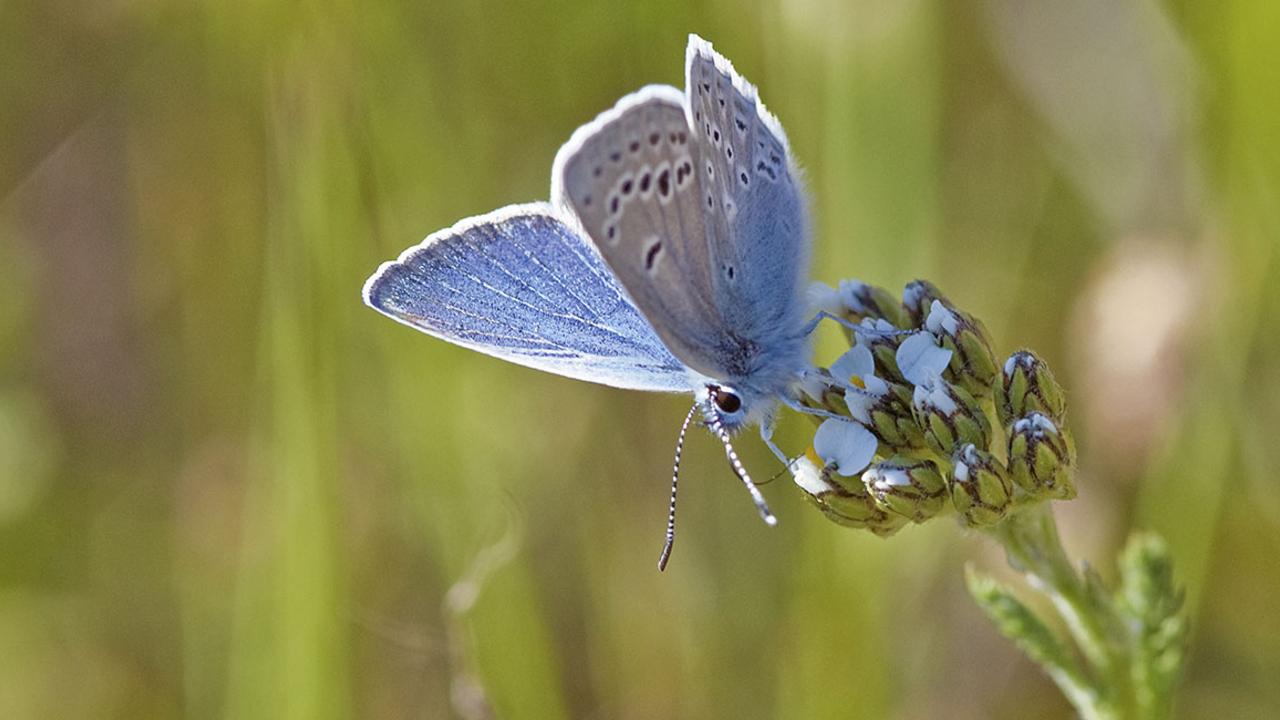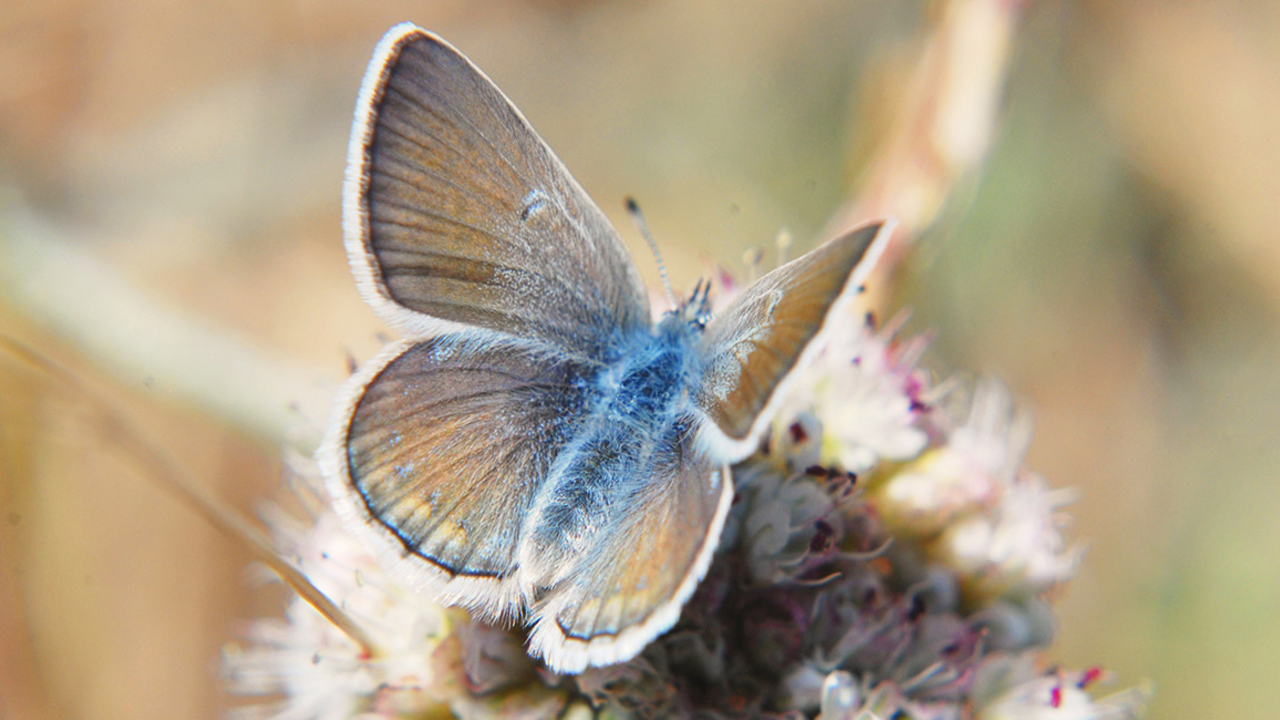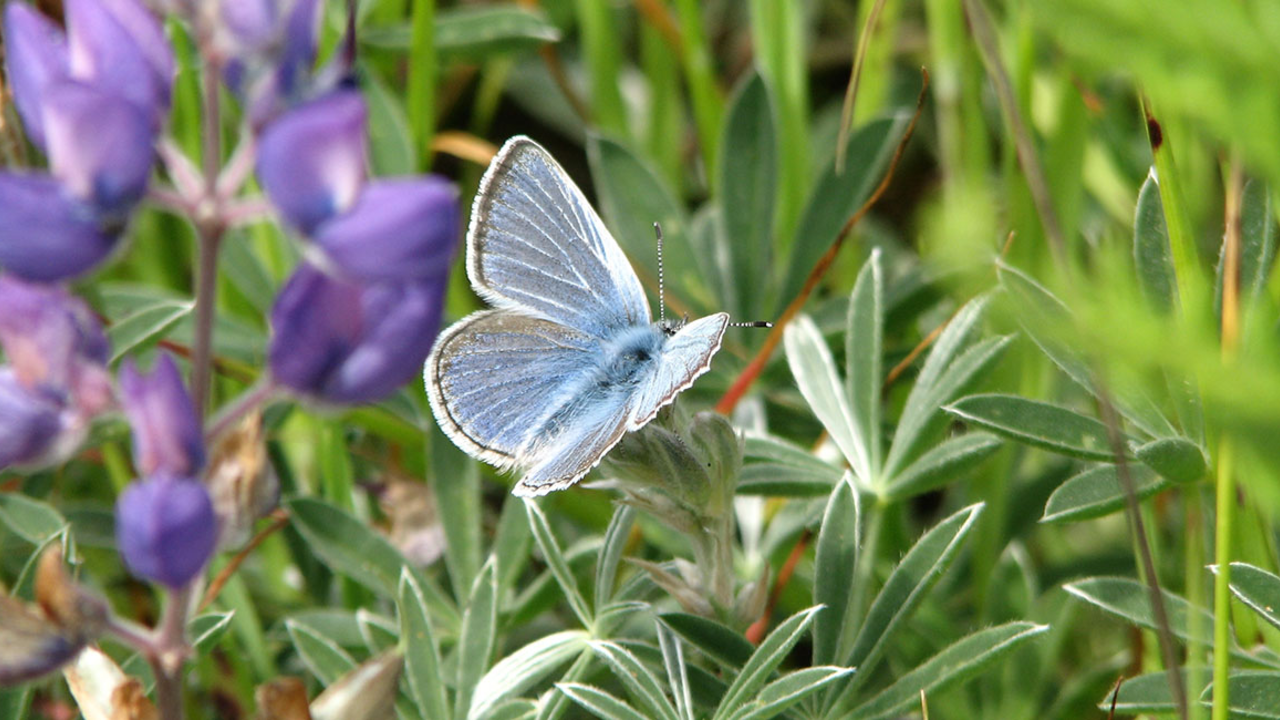Mission Blue Butterfly
Endangered butterfly (Icaricia icarioides missionensis)

Jessica Weinberg McClosky/Parks Conservancy
Threatened or Endangered
Mission blue butterflies (Icaricia icarioides missionensis) are federally listed as endangered.
Population
The San Bruno Mountain population has been estimated at around 18,000 adults. The Skyline Ridges support approximately 2,000 adults, and there may be as many as 500 at Twin Peaks. The Marin Headlands population has not been estimated, but is significant.
Description
On the upperside of the wings, the adult female is brown with some blue, and the male is light blue. Both have blackish wing edges. The underside of the wings is off-white with two rows of irregularly shaped black spots. The larva (caterpillar) is light green with diagonal white bars on each segment.
Size
Adults are about the size of a quarter (21–33 mm). Larvae are very small and rarely seen.
Habitat
The Mission blue requires a larval host plant and appropriate nectar plants in a coastal grassland habitat. The host plants primarily utilized by the Mission blue are silver lupine (Lupinus albifrons) and summer lupine (Lupinus formosus). Nectar plants are varied, and often include several members of the sunflower family that grow in association with the lupines.
Range
Remaining populations of Mission blue butterfly are found in only a few locations around the San Francisco Bay area in California: the Marin Headlands (Marin County), the Skyline ridges (San Mateo County), San Bruno Mountain (San Mateo County), and at Twin Peaks (San Francisco County). The historical distribution of the species probably encompassed much of the coastal scrub/grassland habitat of the northern San Francisco peninsula and Marin County.
Life Cycle
The eggs are usually laid singly on the dorsal side of new lupine leaves, but may also be laid on stems, flowers, and seed pods of the lupine. Eggs hatch within 6–10 days, and the first and second instar larvae feed on the mesophyll of the host plant. Approximately three weeks after eclosion, the second instar larvae begin diapause, usually in the litter at the base of the host plant. Diapause begins at about the same time that the host lupine shifts its energy from leaf maintenance to flower and seed production. Larvae remain in diapause for the rest of the summer and through the winter, and emerge to continue feeding in the spring. Pupation, which lasts about a week, occurs in the duff at the base of the host plant or other plants. The adult flight period lasts from March to June. Adults live for approximately one week, and females lay eggs on the host plant. The complete life cycle of the Mission blue lasts one year.
Food Source
Mission blue larvae will feed only on the leaves of the three host lupines: L. albifrons, L. formosus, and L. variicolor. Adults may drink the nectar of composite flowers (sunflower family), using a long tube called a proboscis that extends from the underside of the head.
Behavior
Mission blue larvae spend most of their time feeding on lupine leaves in a variety of weather conditions. Adults spend their short lives mating, laying eggs, and nectaring. To locate a mate, adults patrol around in patches of host plant, rarely straying far from the lupine habitat. On rainy, cool, windy, or foggy days, adults hide out underneath vegetation.
Legal Protection
The Mission blue was added to the Federal Endangered Species List in 1976, and is protected under the Endangered Species Act.
Our Work
The Golden Gate National Parks Conservancy works on habitat restoration projects at a number of sites that support Mission blue butterflies, including Milagra Ridge in San Mateo County, and Wolfback Ridge, Hawk Hill, and Oakwood Valley in Marin County. In 2017, the Conservancy also began a multi-year project to boost the Mission blue butterfly population at Milagra Ridge by translocating butterflies from San Bruno Mountain.


